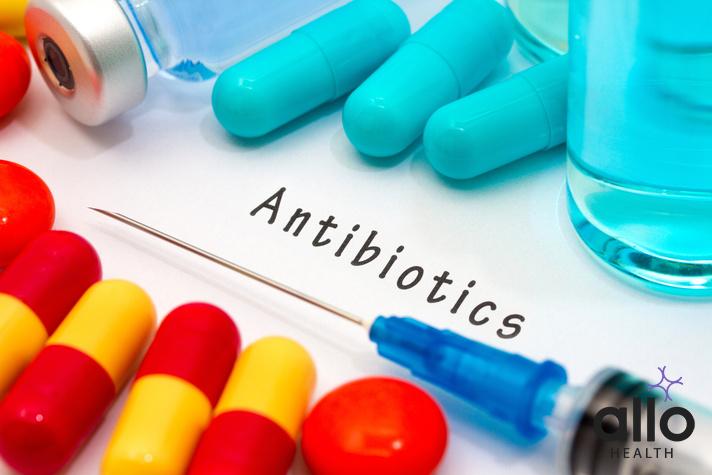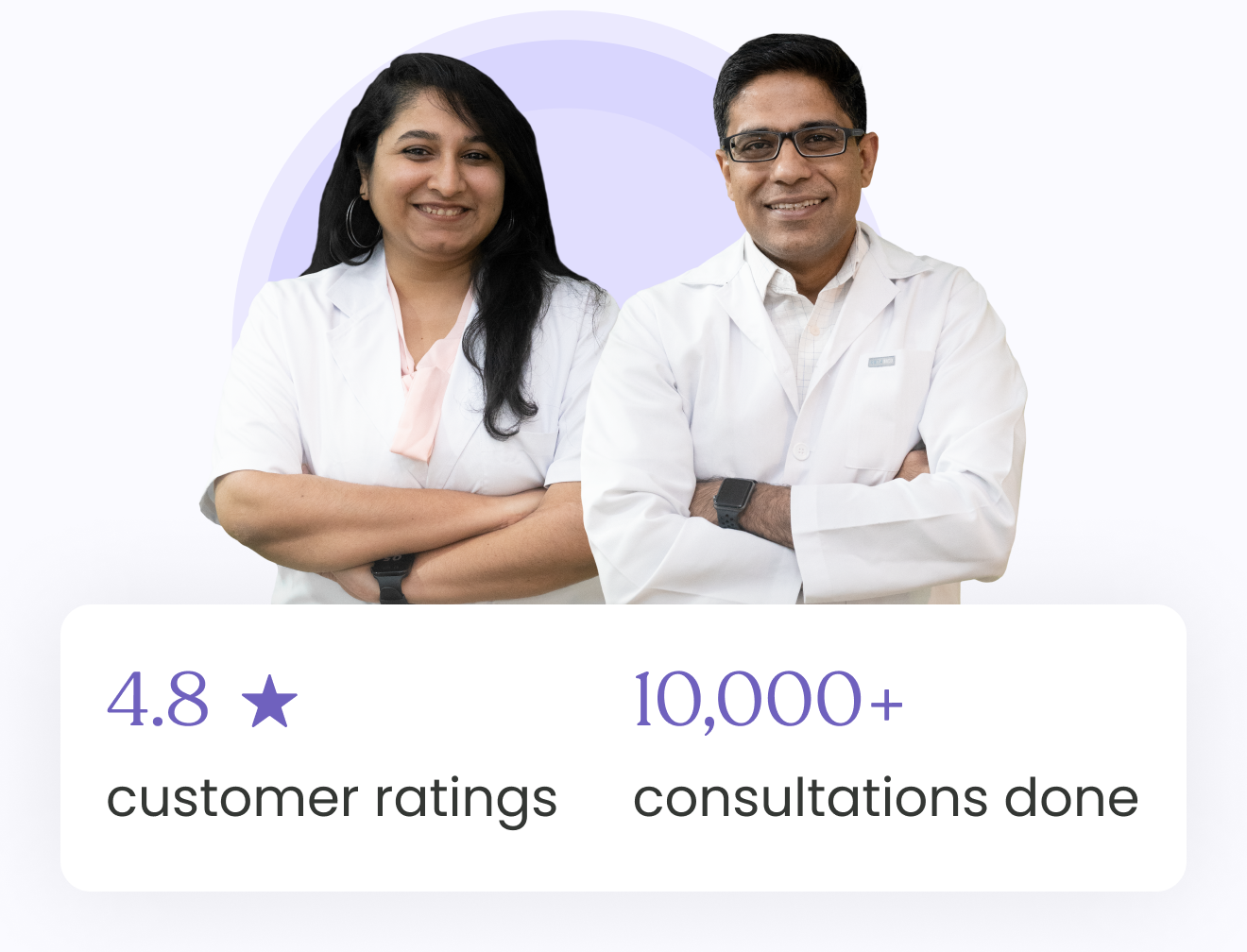Candidiasis (Yeast Infection) Effective Treatment Options

Allo Health is dedicated to personalized well-being, offering support and trusted information tailored to individual health goals. The platform emphasizes human-generated content, led by a distinguished medical team of experts, including physicians and sexual health specialists. Their commitment to credibility involves rigorous fact-checking, authoritative research, and continuous updates to ensure accurate, up-to-date information. Allo Health's unique approach goes beyond conventional platforms, providing expert-led insights and a continuous commitment to excellence, with user feedback playing a crucial role in shaping the platform's authoritative voice.

Dr Thanushree, has her MBBS from Kanachur Institute of Medical Sciences, Mangalore
Why This Was Upated?
Our experts continually monitor the health and wellness space, and we update our articles when new information became available.
Updated on 26 February, 2025
- Article was updated as part of our commitment to diversity, equity, and inclusion.
"The following blog article provides general information and insights on various topics. However, it is important to note that the information presented is not intended as professional advice in any specific field or area. The content of this blog is for general educational and informational purposes only.
Book consultation
The content should not be interpreted as endorsement, recommendation, or guarantee of any product, service, or information mentioned. Readers are solely responsible for the decisions and actions they take based on the information provided in this blog. It is essential to exercise individual judgment, critical thinking, and personal responsibility when applying or implementing any information or suggestions discussed in the blog."
Candidiasis, commonly referred to as a yeast infection, is a fungal infection caused by the overgrowth of Candida species, primarily Candida albicans. While Candida is naturally present in the body, an imbalance can lead to infection, affecting various parts of the body such as the genitals, mouth, throat, and skin. Effective treatment of Candidiasis aims to alleviate symptoms, eradicate the fungal infection, and prevent recurrence. In this comprehensive guide, we will explore various treatment options available for managing Candidiasis, shedding light on their mechanisms of action, efficacy, and considerations for optimal patient care.
Antifungal Medications: The Cornerstone of Candidiasis Treatment
Antifungal medications are the primary treatment modality for Candidiasis, exerting their therapeutic effects by inhibiting the growth and replication of Candida organisms. These medications may be administered orally, topically, or intravenously, depending on the severity and location of the infection. Here are some common types of antifungal medications used in the treatment of Candidiasis:
- Azole Antifungals: Azole antifungals, such as fluconazole, itraconazole, and ketoconazole, are commonly prescribed for the treatment of Candidiasis due to their broad-spectrum activity against Candida species. These medications work by inhibiting the synthesis of ergosterol, a crucial component of fungal cell membranes, leading to cell death and eradication of the infection. Oral fluconazole is often used as a first-line treatment for vaginal yeast infections, while topical azole creams or ointments may be applied to the skin for cutaneous Candidiasis.
- Polyene Antifungals: Polyene antifungals, such as nystatin and amphotericin B, are effective against Candida species and are commonly used for the treatment of oral thrush and gastrointestinal Candidiasis. These medications bind to ergosterol in fungal cell membranes, disrupting membrane integrity and causing leakage of intracellular contents, ultimately leading to fungal cell death. Nystatin is available in various formulations, including oral suspensions and topical creams, while amphotericin B may be administered intravenously for systemic infections.
- Echinocandin Antifungals: Echinocandin antifungals, such as caspofungin, micafungin, and anidulafungin, are a newer class of antifungal agents that inhibit the synthesis of beta-glucan, a key component of fungal cell walls. These medications are primarily used for the treatment of invasive Candidiasis and systemic fungal infections, including those caused by multidrug-resistant Candida species. Echinocandins are administered intravenously and are often reserved for severe or refractory cases of Candidiasis.

Topical Therapies for Cutaneous Candidiasis
For cutaneous Candidiasis, which affects the skin and skin folds, topical antifungal therapies may be prescribed to alleviate symptoms and eradicate the fungal infection. Topical antifungal creams, ointments, or powders containing azole antifungals, such as clotrimazole, miconazole, or econazole, are commonly used for this purpose. These medications should be applied to the affected area according to the prescribed regimen, typically for a specified duration to ensure complete eradication of the infection. In addition to antifungal therapy, maintaining good hygiene and keeping the affected area clean and dry can help prevent recurrence of cutaneous Candidiasis.
Management of Vaginal Yeast Infections
Vaginal yeast infections, characterized by itching, burning, and abnormal vaginal discharge, are a common manifestation of Candidiasis in women. The treatment of vaginal yeast infections typically involves antifungal therapy, such as oral fluconazole or topical azole antifungal creams or suppositories. Oral fluconazole is often preferred for its convenience and efficacy, with a single-dose regimen providing rapid relief of symptoms in many cases. Topical azole antifungal products, such as clotrimazole, miconazole, or tioconazole, may be used as an alternative treatment option and are available over-the-counter for self-administration. It is essential for women to follow the prescribed treatment regimen and complete the full course of therapy to ensure successful resolution of the infection.
Management of Oral Thrush
Oral thrush, characterized by white, creamy patches on the tongue, inner cheeks, or throat, is a common manifestation of Candidiasis in the oral cavity. Treatment of oral thrush typically involves antifungal therapy, such as topical nystatin oral suspension or systemic azole antifungal medications like fluconazole. Topical nystatin oral suspension is often used as the first-line treatment for mild to moderate cases of oral thrush and is administered as a mouth rinse or oral swish-and-swallow suspension. In cases of severe or refractory oral thrush, systemic antifungal therapy with fluconazole or other azole antifungals may be prescribed for a specified duration under medical supervision.
Prevention of Recurrent Candidiasis

Preventing recurrent Candidiasis requires addressing underlying risk factors and adopting preventive measures to minimize the risk of reinfection. Here are some strategies for preventing recurrent Candidiasis:
- Maintain Good Hygiene: Practice regular hygiene habits, including washing the genital area with mild soap and water and keeping skin folds clean and dry.
- Avoid Irritants: Avoid using harsh soaps, scented body washes, douches, and feminine hygiene products that may disrupt the natural balance of microorganisms in the genital area.
- Manage Underlying Conditions: Control underlying medical conditions such as diabetes, HIV/AIDS, or immunodeficiency disorders that may predispose individuals to Candidiasis.
- Limit Antibiotic Use: Use antibiotics judiciously and only when necessary to avoid disrupting the microbial balance in the body and promoting Candida overgrowth.
- Practice Safe Sex: Use condoms during sexual intercourse to reduce the risk of genital yeast infections and sexually transmitted infections.
Candidiasis is a common fungal infection that can affect various parts of the body, including the genitals, mouth, throat, and skin. Effective treatment of Candidiasis involves the use of antifungal medications, which work by inhibiting the growth and replication of Candida organisms. Depending on the severity and location of the infection, treatment options may include oral, topical, or intravenous antifungal therapies. In addition to pharmacological interventions, maintaining good hygiene, addressing underlying risk factors, and adopting preventive measures are essential for preventing recurrent Candidiasis and promoting overall health and well-being. By understanding the available treatment options and implementing comprehensive management strategies, healthcare providers can optimize patient care and improve outcomes for individuals affected by Candidiasis.








































